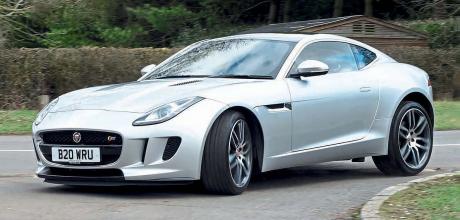2015 Jaguar F-Type V6 S – driving the rare V6 manual
Jaguar’s return to a manually-shifted six-cylinder two-seat coupe came late in the day, but the rare F-Type V6S is worth seeking out as we discovered.
WORDS PAUL WAGER
PHOTOGRAPHY PAUL WALTON
Late Shift – modern drive
The F-Type at its best – driving the rare V6 manual
We revisit the much underrated three-pedal incarnation of the E-Type for the new era.
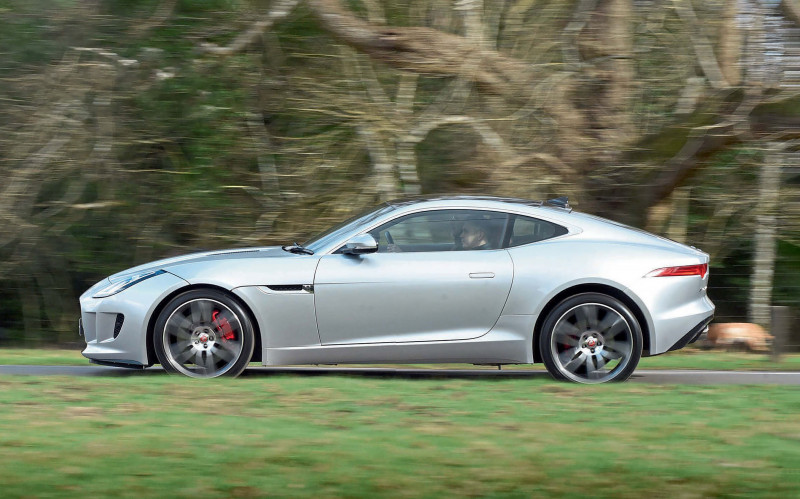
It might not surprise you to discover that photographing cars on location for magazines often isn’t plain sailing, especially where classics are concerned. A smoky exhaust spoiling the snapper’s efforts, coupled with a dodgy battery which means you daren’t risk turning the engine off… a radio aerial which won’t retract or on one memorable occasion a wisp of smoke curling from the engine bay of an XJR-S as the ignition system expired.
In contrast, photographing modern cars is a delight; everything works and there’s nothing out of place to spoil the glamour of the finished image. Which is why we found ourselves laughing as we tried to create a rear shot of the F-Type you see here, without the door handles in their extended position or the mirrors folded back. Cue much juggling of remote key and camera in order to capture the car with the mirrors extended but not the door handles, laughing all the while about first world problems.
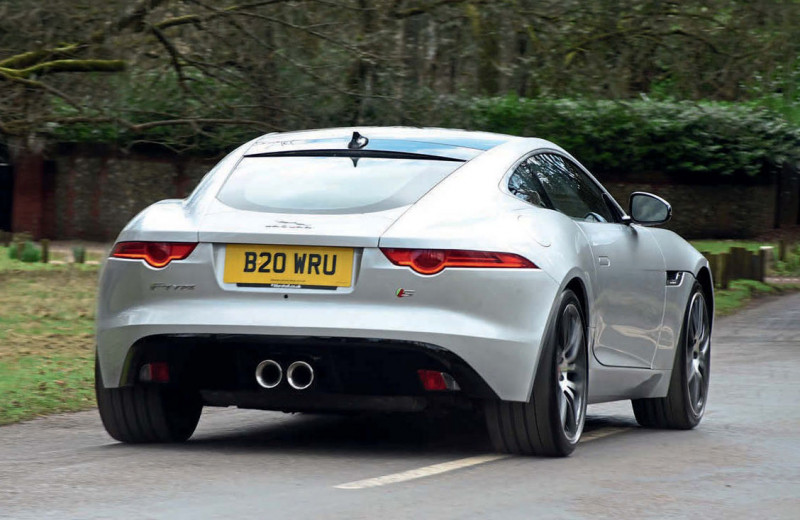
The photographer’s objection to the car having its handles out has a serious point though in that the F-Type is such a tightly wrought piece of design that the slightest detail spoiling its lines sticks out like a sore thumb.
I’ve always thought the car was at its best in coupe form, the convertible inevitably looking a little fussier and in turn at its best in Rhodium Silver, which is exactly what we have here, courtesy of owner Jason Marshall.
Visit any of the regular Jaguar enthusiast gatherings and you’ll see that the F-Type is one of the more commonly modified Jaguar models, a showroom-stock example being a rare beast. This one however, is exactly as it left Castle Bromwich back in 2016 and for that reason you could be forgiven for wondering exactly why we’ve devoted six pages to it.
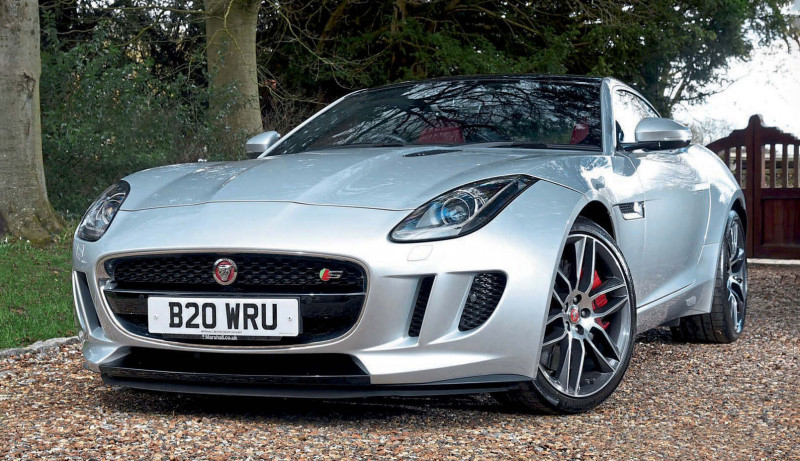
You’ll need to peer through the window to find the answer, which comes in the shape of an unfamiliar ornament sprouting from the central tunnel and an extra pedal in the footwell, all of whichmeans that this is one of the very fewmanual F-Types to be made. As launched in 2013, the F-Type coupe was initially offered in either V8 or V6 flavours, the supercharged 3-litre V6 available in 340PS or 380PS ‘S’ form.
Like the XK and XK8 before it, Jaguar’s sports car for the modern era was initially offered in automatic-only form, using the eight-speed ZF box, a conventional torque converter automatic which offers commendably fast shifts – if not quite as snappy as a DSG-style box – combined with suitable refinement.
In 2015 though, a ZF six-speed manual was introduced as an option, using the transmission also found in turbocharged six-cylinder BMWs. The manual option could be ordered only on the V6 models, in which form the F-Type became the first six-cylinder, two-seater, manual Jaguar since the XJ-SC 3.6 Cabriolet of 1983. Although with 380PS on tap in a car weighing in at 1597kg, the F-Type V6S manual was a rather more electrifying prospect than its ’80s predecessor.

And it was for this reason that Jason bought the car you see here, which replaced a serious piece of weaponry in the shape of a 997-generation Porsche 911 Cabriolet. “My first mid-life crisis car if you like,” laughs Jason, but the idea of a fun car for weekends was by nomeans a temporary thing and he ended up keeping the Porsche for five years, at which point he fancied a change, no doubt encouraged by friend and near neighbour Dan Pitt, owner of the manual XJ-S we featured in our September issue last year in a twin test with the Porsche 944.
Clearly, a move from 21st century Porsche to ’70s-designed Jaguar would be too much of a culture shock, but rather than an XJ-S, Dan was steering Jason towards the F-Type.
There was one slight obstacle though. “I definitely wanted a manual. Otherwise there would have been no point,” explains Jason, gesturing towards his 5-Series. “I mean I may as well just drive the BMW...”
At this point, it seems only fair to hand the stage over to Dan, who admits he was instrumental in steering Jason towards the F-Type purchase. “I think it’s one of those cars that’s slipped under the radar and it sits in that no-man’s land of being neither new or old,” says Dan. “There haven’t been that many manual sporting Jaguars since the E-Type, in fact you can count them on the fingers of one hand: Early pre-HE XJ-S (352 of them), the 3.6 / 4.0 XJ-S and XJ40 (a few thousand) and the X300 XJR (a few hundred of those too). I think that’s it. I think it’s fascinating how manual boxes and Jaguars don’t seem to ‘work’ – until you actually drive one and find out that for some it offers that little bit of extra interactivity.”
And it’s a good point he makes, too. I’ve driven a varied selection of F-Types over the years and always felt that the V6 engine showed it at its best. A controversial statement maybe, but in V8 form I’ve always felt the car lost a little of its appeal in the pursuit of headline performance figures. Yes, it’s brutally fast but after an hour or so can become hard work and all too often you find yourself wondering if it isn’t all a bit too much for a road car.
The V6 in contrast is easy to enjoy. The AJ-126 engine may well have been derived from the V8 but has a very different character, more eager to rev and sounding altogether sharper than the sledgehammer V8. All of which makes it ideal for pairing to a manual box, yet for reasons which have never been fully explained, Jaguar never properly exploited that opportunity.
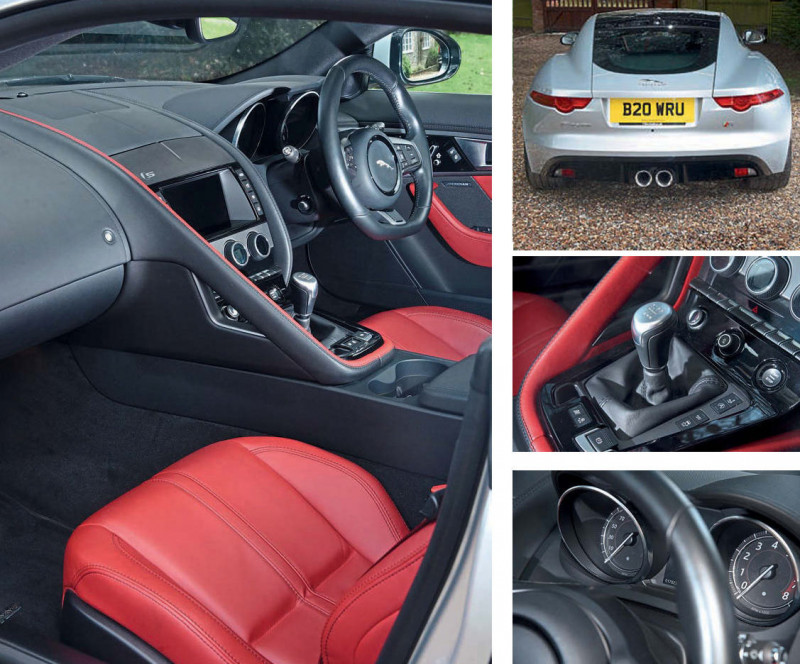
The manual F-Type is a real rarity: some say it represents just 3% of F-Type production, with DVLA figures showing just 135 examples registered between 2014 and 2017, plus a further 12 cars – presumably unsold stragglers – registered in 2018 and 2019. To put that in perspective, the company sold more manual V12 XJ-S’s than it did manual F-Types.
No doubt there was some sound commercial thinking behind the decision to discontinue the model (although this being JLR quite possibly not...) but it’s hard not to view it as a missed opportunity.
It’s something a brief drive in Jason’s car only reinforced. Regular readers will remember that erstwhile editor Walton wasn’t a fan when he sampled the car at its launch, whereas Jason clearly loves the car, as does Dan. And, I have to say, so do I. The six-speed suits the nature of the F-Type nicely, having a pleasingly solid feel to the shift action yet without feeling obstructive, while the unobtrusive clutch action is that of a modern car. One criticism of the manual is that the position of the shift lever means some drivers will find themselves nudging an elbow on the seat pulling the lever back to the second/fourth/ sixth plane, something which prompted a random discussion about leg length versus forearm. Suffice to say I didn’t notice it until it was pointed out.
Practicalities apart, it’s on the road that the package really shines and the three-pedal shift really turns the F-Type into a driver’s car. Yes, the eight-speed automatic is impressive on technical grounds, but in order to make the car come alive you have to push it that much harder, whereas the six-speed requires more thought, more planning of control inputs and, well… simply more driving skill. It’s not quite up there with crunch-free navigation of an elderly Moss four-speed but there’s a similar satisfaction to be had from getting it right – whether that’s a well-timed downshift before a challenging corner or simply maintaining smooth progress in traffic.
Naturally, the manual car also retains all the attributes of the F-Type in general, notably the lovely ride which Jaguar has, against all odds, managed to cling to as a USP since the first XJ. Jason’s example came on the standard wheels which he promptly upgraded to a set of the 19-inchers which were originally available as options, yet it still handles the potholes and trench scars of British roads nicely. Throw in the neat handling balance the F-Type is known for, the limited-slip diff and the very modern cabin and infotainment and it stacks up as a very competitive product. Competitive against what, though?
Surprisingly few serious candidates. The obvious contender is Porsche, specifically the second-generation ‘981’ Cayman which still holds its value above the level of the Jaguar – although there are more manuals to choose from. As Dan is keen to point out, the Aston Martin V8 Vantage is another possibility, yet for F-Type money you’ll be buying an older car with a massive potential for problems. And after running the V12 Vantage project car for Jaguar World’s parent company, you’ll never find me spending my own money on an Aston Martin, such is the woeful quality and disappointing driving experience.
Which brings us neatly to a conclusion: if you want a sharp-looking, modern twoseater sports coupe with a six-cylinder engine and 380 horses and you want the engagement of a proper manual box then the F-Type fits the bill very nicely – if you can find one, that is. Just don’t expect Jason to sell you his. he’s keeping hold of it.
TECHNICAL DATA Jaguar F-Type V6 S
- Engine 2995cc V6
- Max Power 375 bhp at 6500rpm
- Max Torque 339 lb.ft at 3500-5000rpm
- 0-60mph 5.3 secs
- Max speed 171mph
- Transmission 6-spd man


